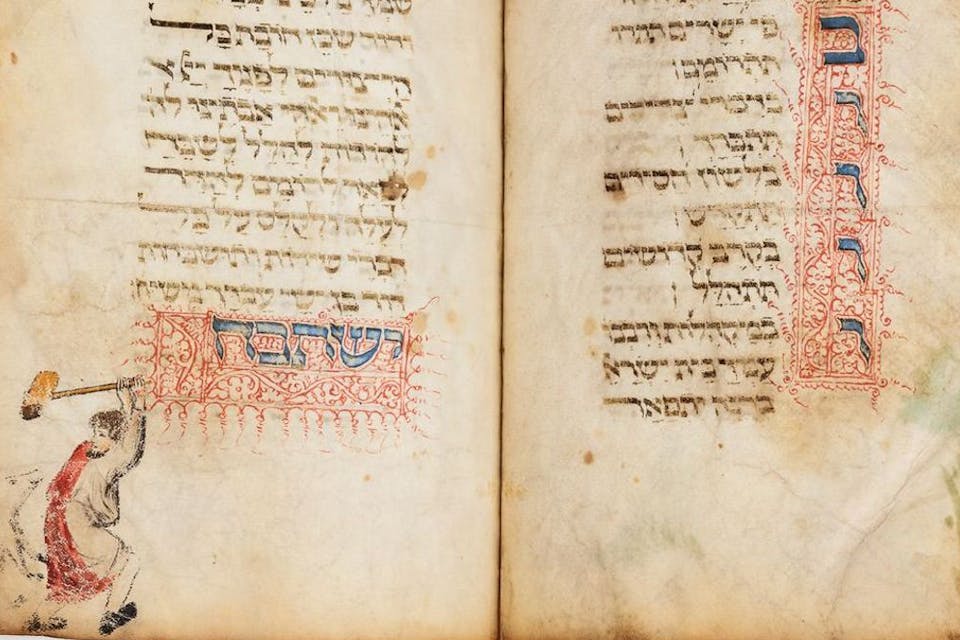
April 28, 2020
The Real Reason 14th-Century Italian Jews Put a Pig in Their Haggadah
It's not that they were exceptionally sophisticated or tolerant, as one popular recent article would have it—it's that they lived surrounded by people who raised pigs.
In some American Jewish households, the custom of placing an orange on the traditional seder plate to signify the inclusion of gay and lesbian Jews in the community—an innovation out of whole cloth originally dreamed up, in her own account, by Susannah Heschel—has become a conventional element of Passover observance. But now Adam Cohen, a professor of art history at the University of Toronto, claims to have unearthed another, much earlier, and even more startling Passover-related novelty. He has shared his detective work, as he calls it, with the readers of the Forward in an article bearing a title evocative of Sir Arthur Conan-Doyle: “The Curious Incident of the Pig in the Haggadah.”
The eponymous pig is an image of a man slaughtering a pig that graces the Lombard Haggadah, an illustrated Hebrew manuscript produced around 1390 in northern Italy (and about which I have written previously in Mosaic). Admittedly somewhat strange, the image assumes its place in that beautiful work as one in a pictorial series on the theme of the Labors of the Month: a normal feature of medieval and early Renaissance illustrated manuscripts. In this Haggadah, made for a Jewish patron by Christian artists, just as in the manuscripts made for Christian patrons, it serves as the emblem of the month of December.
Cohen, however, connects the Labors as they appear in the Lombard Haggadah with Psalm 136, itself a constituent part of the standard Haggadah text. This psalm, he says, centers on the variety and wonders of creation and the natural world. As for the shocking inclusion of the image of a pig in a Haggadah, Cohen ultimately attributes it to the sophisticated, urbane, and tolerant tastes of the work’s wealthy Jewish patrons.